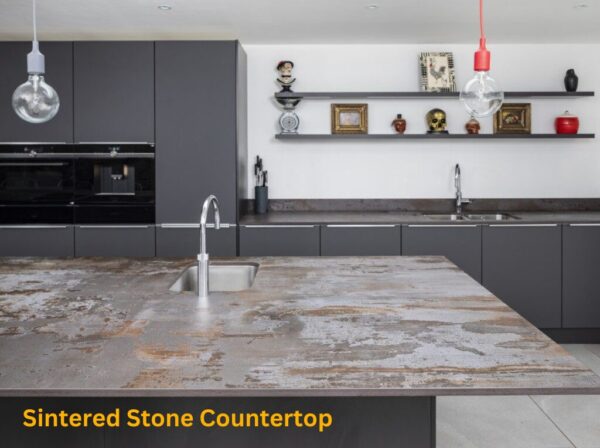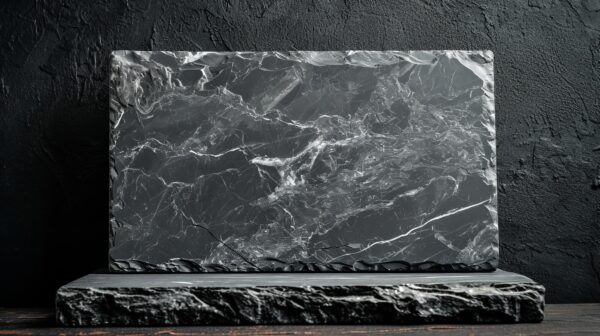Is Sintered Stone Better Than Marble? Sintered Stone VS Marble
Are you considering new countertops or furniture for your home but unsure whether to choose sintered stone or marble? Both materials have their own unique characteristics and benefits. In this blog, we’ll explore the differences between sintered stone and marble to help you make an informed decision.
Sintered stone is a relatively new material in the market, gaining popularity for its durability and versatility. On the other hand, marble has been a classic choice known for its elegance and timeless appeal. In this comparison, we’ll walk you through the composition, advantages, disadvantages, durability, maintenance, and cost of both materials. By the end, you’ll have a clear understanding of which material suits your needs and preferences best. Let’s get started!
What is Sintered Stone?
Sintered stone is a synthetic material created by compressing and heating natural minerals such as quartz and silica to high temperatures. This process creates a dense, durable material that is resistant to stains, scratches, and heat. Sintered stone is available in a wide range of colors and finishes, making it versatile for various design styles.

One of the key features of sintered stone is its strength and durability. It is highly resistant to chipping, cracking, and etching, making it ideal for use in high-traffic areas such as kitchens and bathrooms. Additionally, sintered stone is non-porous, which means it does not absorb liquids and is resistant to staining. This makes it easy to clean and maintain, requiring only a mild detergent and water for regular cleaning. Overall, sintered stone is a modern and practical choice for countertops, flooring, and other surfaces in your home.
What is Marble?
Marble is a natural stone that has been used in buildings and sculptures for centuries. It is formed from limestone that has been subjected to intense heat and pressure, resulting in a crystalline structure. Marble is known for its beauty and elegance, with unique veining patterns and a smooth, polished finish.

One of the key characteristics of marble is its variety of colors and patterns, ranging from white and gray to pink, green, and black. This makes marble a versatile choice for a wide range of design styles.However, marble is also a porous stone, which means it can absorb liquids and is prone to staining. It is also softer than some other natural stones, making it more susceptible to scratches and etching. Despite these drawbacks, marble remains a popular choice for countertops, flooring, and decorative accents due to its timeless appeal and natural beauty.
Advantages of Sintered Stone
Sintered stone offers several advantages over other materials due to its unique manufacturing process and composition. Here are some key benefits:
Durability
Sintered stone is incredibly durable, making it resistant to scratches, stains, and heat. This durability is due to its composition, which includes natural minerals compressed and heated at high temperatures. As a result, sintered stone is ideal for high-traffic areas like kitchens and bathrooms, where it can withstand daily wear and tear without losing its aesthetic appeal.
Versatility
Sintered stone comes in a wide range of colors, textures, and finishes, providing versatile design options for various applications. Whether you prefer a sleek, modern look or a more traditional style, there is a sintered stone option to suit your needs. Additionally, sintered stone can be cut into different shapes and sizes, making it suitable for countertops, flooring, wall cladding, and even furniture.
Low maintenance
Sintered stone is easy to clean and maintain, requiring only a mild detergent and water. Its non-porous surface prevents liquids and stains from penetrating, making it resistant to bacterial growth and mold. This low maintenance requirement makes sintered stone a practical choice for busy households or commercial spaces where cleanliness is a priority.
Hygienic
The non-porous nature of sintered stone makes it highly hygienic, as it does not harbor bacteria or mold. This is particularly important for surfaces like countertops, where food preparation takes place. With sintered stone, you can have peace of mind knowing that your surfaces are clean and safe for use.
Disadvantages of Sintered Stone
While sintered stone offers many advantages, there are also some drawbacks to consider:
Cost
Sintered stone can be more expensive than other materials such as granite or laminate. The manufacturing process and quality of the material contribute to its higher cost.
Installation
Due to its density and weight, sintered stone can be challenging to install. Specialized tools and expertise may be required, adding to the overall cost of installation.
Limited availability of colors and patterns
While sintered stone comes in a variety of colors and patterns, the selection may not be as extensive as other materials like natural stone or quartz.
Brittleness
Despite its durability, sintered stone can be brittle and prone to chipping or cracking if subjected to heavy impact or pressure.
Advantages of Marble
Marble is a timeless and elegant choice for countertops, flooring, and decorative accents in your home. It offers several advantages:
Natural Beauty
Marble is revered for its natural beauty, characterized by unique veining patterns and a luxurious appearance that adds a touch of sophistication to any space. Each slab of marble is a piece of art from nature, making it a popular choice for those seeking a one-of-a-kind aesthetic in their homes.
Cool Temperature
Marble is naturally cool to the touch, which can be a welcome feature in warm climates or for use as a baking surface. Its ability to maintain a lower temperature than room temperature can make it a comfortable and practical choice for various applications.
Increased Home Value
Marble countertops are often seen as a luxury feature in a home, and as such, they can increase the overall resale value. Potential buyers are often willing to pay more for a home with high-end finishes like marble, making it a valuable investment.
Longevity
With proper care and maintenance, marble can last for generations. While it may require more care than some other materials, such as regular sealing to protect against stains, the timeless beauty and durability of marble make it a worthwhile choice for many homeowners.
Disadvantages of Marble
Marble, while beautiful and luxurious, has several drawbacks that should be considered before choosing it for your home.
Prone to Scratching and Etching
Marble is a softer stone compared to granite or quartz, which makes it more susceptible to scratches and etching. This means that sharp objects or acidic substances can easily damage the surface, requiring regular maintenance and care to preserve its appearance.
Staining
Marble is also porous, which means it can absorb liquids and stains. This makes it vulnerable to spills from wine, coffee, and oils, which can leave permanent marks if not cleaned up quickly and properly.
High Maintenance
Due to its susceptibility to scratches, etching, and staining, marble requires regular sealing and special care to maintain its beauty. This includes using pH-neutral cleaners and avoiding abrasive materials that can damage the surface.
Cost
While marble is prized for its elegance and sophistication, it is generally more expensive than other natural stones like granite or quartz. This higher cost is due to its limited availability and the labor-intensive process of mining and cutting the stone.
Also Read: Should You Buy a Mattress Protector?
Maintenance Requirements of Sintered Stone and Marble
Sintered stone is easy to clean and maintain, requiring only a mild detergent and water. Its non-porous surface resists stains and bacterial growth, making it hygienic and easy to care for. Marble, however, is more high maintenance. It is porous and requires regular sealing to protect against stains. Additionally, marble should be cleaned with a pH-neutral cleaner to avoid etching the surface. Overall, sintered stone is the more low-maintenance option of the two.
Resistance to Stains and Scratches
Sintered stone is highly resistant to stains and scratches due to its dense composition and non-porous surface. This makes it ideal for use in areas where spills and scratches are common, such as kitchens and bathrooms. Marble, while beautiful, is more prone to staining and scratching. It requires regular sealing to protect against these issues, making it higher maintenance compared to sintered stone.
Heat Resistance of Sintered Stone and Marble
Sintered stone is highly heat resistant, able to withstand high temperatures without damage. This makes it suitable for use near stoves and ovens in kitchens. Marble, while not as heat resistant as sintered stone, can also withstand moderate heat. However, it is still advisable to use trivets or hot pads to protect the surface from direct heat exposure and prevent any potential damage.
Aesthetics of Sintered Stone and Marble
Sintered stone offers a modern and sleek aesthetic, with a wide range of colors and patterns available to suit various design styles. It can mimic the look of natural stone or have a more contemporary appearance, making it versatile for different applications. Marble, on the other hand, has a classic and timeless beauty, with unique veining patterns that add elegance to any space. Both materials offer distinct aesthetic qualities, allowing homeowners to choose the option that best suits their style preferences.
Installation Process of Sintered Stone and Marble
The installation process for sintered stone and marble can vary depending on the specific application and design requirements. However, there are general steps involved in installing both materials.
Measurement and Planning: Measure the space and plan the layout for a proper fit.
Preparation: Prepare the surface by ensuring it is clean, level, and free of debris.
Cutting and Shaping: Cut and shape the slabs according to the measurements.
Placement: Place the slabs on the prepared surface and secure them in place.
Sealing (Marble Only): Marble is porous and requires sealing to protect against staining. Sintered stone does not require sealing.
Grouting (if applicable): If there are gaps between the slabs, grout may be applied to fill them and provide a finished look.
Finishing touches: Clean the surface and make any final adjustments to ensure a perfect installation.
Final inspection: Inspect the installation to ensure everything is properly placed and secured.
Cost Comparison of Sintered Stone and Marble
In terms of cost, sintered stone is generally more expensive than marble. The material cost for sintered stone is higher per square foot compared to marble. Additionally, the installation cost for sintered stone can be higher due to its density and the specialized tools required.
Marble, on the other hand, is typically less expensive both in terms of material cost and installation cost. However, marble requires more maintenance, including regular sealing, which can add to its long-term cost. Overall, while marble may be initially cheaper, sintered stone could be more cost-effective in the long run due to its durability and lower maintenance requirements.
Which is Suitable for Household Furniture and Countertops?
Sintered stone is a great choice for household furniture and countertops due to its durability and versatility. It is highly resistant to scratches, stains, and heat, making it ideal for use in kitchens and dining areas where spills and messes are common. Sintered stone is also non-porous, which means it does not absorb liquids or harbor bacteria, making it a hygienic choice for countertops.
Additionally, sintered stone comes in a wide range of colors, textures, and finishes, allowing for versatile design options. It can mimic the look of natural stone or have a more modern appearance, making it suitable for various design styles. Overall, sintered stone is a practical and stylish choice for household furniture and countertops, offering both durability and aesthetic appeal.
In a nutshell, both sintered stone and marble have their own unique advantages and disadvantages. Sintered stone is more durable, easier to maintain, and offers a wide range of design options, making it a practical choice for household furniture and countertops. On the other hand, marble is known for its timeless beauty and elegance, but it requires more maintenance and is less durable than sintered stone. Ultimately, the choice between sintered stone and marble depends on your budget, aesthetic preferences, and the specific needs of your space.


Leave A Comment
You must be logged in to post a comment.